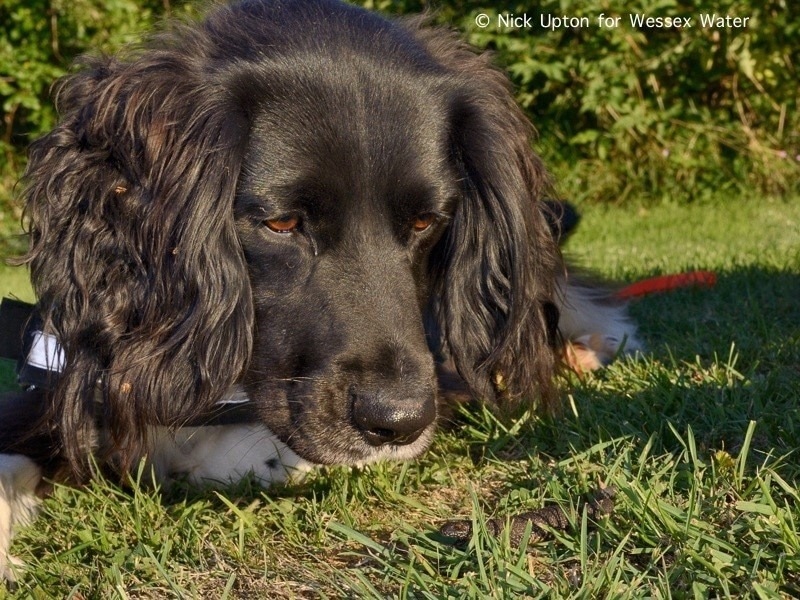New research has revealed the potential for dogs to be used to detect great crested newts and other endangered species.

Image Credit: University of Salford
Currently, this amphibian species is under threat and protected in the UK. As a result, construction projects must employ ecologists to search the area for newts and remove them from the site before building begins, adding delays and costs to many building projects.
But now researchers at the University of Salford have found a new and efficient method for this: using our canine friends to scout them out. The findings are published in the journal PLOS One today.
Nikki Glover, a PhD student, led the paper co-authored by Dr Robert Jehle and Dr Amy Leedale, all from the University of Salford, using a springer spaniel named Freya.
Research on how dogs can be used to detect the newts started when Nikki was looking for a more effective way to locate the species as part of her job role as an ecologist. Although research has looked at dogs detecting amphibians above ground, she wanted to see whether the dogs could be used to locate them at distance and underground.
Great crested newts reproduce in ponds during the spring and move out during the summer months. When on land great crested newts typically live in hard to spot locations such as underground in burrows, where there is currently a lack of methods of detection, creating challenges for ecologists, researchers and the construction industry.
Freya was able to successfully detect great crested newts up to 20 cm underground in both sandy soil and clay soil. Repeat trials have since been undertaken on a springer-cocker spaniel named Newky who also yielded similar results. Both dogs have been successful in locating great crested newts operationally in the wild, uncovering great crested newts in burrows and other restricted structures such as stone walls, log piles, chambers and under concrete paths.
This is the first paper that confirms dogs can detect newts below ground. Using trained dogs to detect newts is a favourable new alternative to methods such as hand-searching, pitfall trapping and radio tracking, as it is more cost effective, efficient, accurate and the searches are not seasonally constrained as well as non-invasive.
Since utilising dogs to detect great crested newts in the wild I have learnt an incredible amount about their terrestrial ecology which will hopefully shape habitat management practices and mitigation measures.
In addition to being a researcher I am also an ecologist working for a water company. The detection dogs have saved a countless number of newts from being killed or injured during construction works due to their ability to detect them above and below ground as well as in obscured structures. In addition to this, the use of detection dogs has saved the company time and money, and limited plastic waste such as resulting from the use of traps.”
Nikki Glover
In her pioneering research, Nikki has shown that detection dogs can be a valuable addition to the current toolbox used in the conservation management of an important wildlife species.”
Dr Jehle